High-Intensity Focused Ultrasound (HIFU) in Mumbai
Search and Compare the Best Clinics and Doctors at the Lowest Prices for High-Intensity Focused Ultrasound (HIFU) in Mumbai
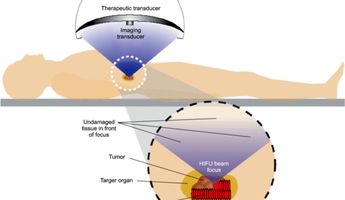
Find the best clinics for High-Intensity Focused Ultrasound (HIFU) in Mumbai
With Medijump you can browse 2 facilities offering High-Intensity Focused Ultrasound (HIFU) procedures in Mumbai. The cheapest price available is $7,003 in Delhi. And for the cheapest price globally, prices start from in .
High-Intensity Focused Ultrasound (HIFU) in India
Price: $ 7,003
High-Intensity Focused Ultrasound (HIFU) in Delhi
Price: $ 7,003
From 153 verified reviews
Shabaaz Mansoori, 07 August 2020
Wockhardt Hospitals are one of the tertiary care, super speciality healthcare networks in India offering healthcare services. The chain of hospitals is owned by the parent company Wockhardt Hospitals Ltd.[1], India's 5th largest Pharmaceutical and Healthcare company with a presence in 20 countries across the globe.[2] Wockhardt hospitals, originally called First hospitals and Heart Institute, were one of the early movers among corporate health-care chains in India. The company was established in 1989 and it started its first operations with a medical center in Kolkata, 1989 and a heart hospital in Bangalore two years later. Today the company has its presence across India with 9 multi speciality hospital networks.
SevenHills Hospital, located in Bombay, Mumbai, India offers patients High-Intensity Focused Ultrasound (HIFU) procedures among its total of 362 available procedures, across 22 different specialties. Currently, there's no pricing information for High-Intensity Focused Ultrasound (HIFU) procedures at SevenHills Hospital, as all prices are available on request only, whilst the national average price is approximately ฿251,999. There are many specialists available at the Hospital, with 19 in total, and they have multiple recognized accreditations, including: JCI AccreditedNABH
Compare Before & After Photos of _procedure_photos.phpHigh-Intensity Focused Ultrasound (HIFU)
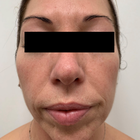
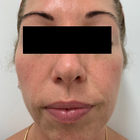
Front view

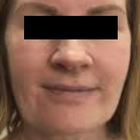
Front view


Front view
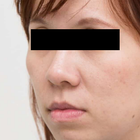
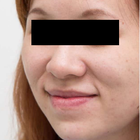
Front view
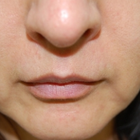
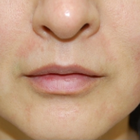
Front view
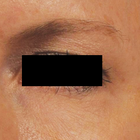
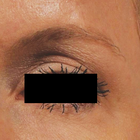
Front view
WHY US?
At Medijump, we're making medical easy. You can search, compare, discuss, and book your medical all in one place. We open the door to the best medical providers worldwide, saving you time and energy along the way, and it's all for FREE, no hidden fees, and no price markups guaranteed. So what are you waiting for?

Free

Best Price

Widest Selection

Risk-Free
What you need to know about High-Intensity Focused Ultrasound (HIFU) in Mumbai
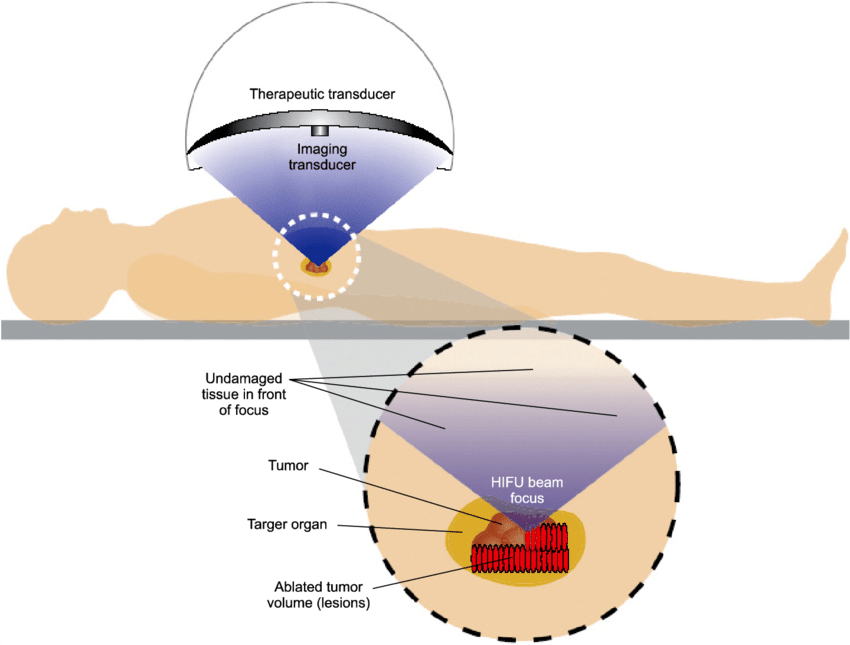
High intensity focussed ultrasound technique (HIFU) also known as focussed ultrasound surgery (FUS), uses non-ionizing ultrasound waves to heat up your body tissues. Temperature can be increased up to 70 to 90°C. These sound waves do not pass through air and bone. It is used for multi-purposes. It works to increase your blood, and lymph flow stimulates cell division and destroys tumor cells. It can also be used to treat a number of disorders including various types of cancer and uterine fibroids. Its use in the treatment of prostate cancer is gaining fame. It can also be used for cosmetic reasons, to reduce wrinkles, aging lines and to lift your loose skin. It is found to be most effective on jawline and cheeks. It should always be performed by the experts because the sonication of the wrong tissue can be dangerous. Also, there might be incomplete destruction of the tumor. Some areas of your body can not be sonicated as they are sensitive to sound waves, this should also be kept in mind while performing HIFU. It can only be used to treat localized cancer and tumors. Cancer which has spread cannot be cured through HIFU.
As HIFU is involved in the treatment of a number of diseases, before going through it, you may suffer from those diseases. These disorders include ovarian fibroids, different types of cancers, breast tumors, Parkinsonism, and a number of other neurological disabilities. You might have loose skin of face, neck, and chest. Vaginal laxity is also a problem. After HIFU, your tumors are destroyed, cancer cells are killed and diseases are cured. Your loose skin looks tightened and strengthened. Wrinkles and aging lines are gone. Vaginal and skin laxity are removed. You look younger than your actual age.
What does a High-Intensity Focused Ultrasound (HIFU) Procedure Involve?
The procedure begins with cleaning the area to be sonicated with alcohol swabs so that there are no germs and bacteria. In the next step, a gel is applied to your skin. Magnetic resonance imaging (MRI) or ultrasound is used to focus the exact tissue, organ or tumor that needs to be treated. The individual is sedated to avoid discomfort and pain during the procedure. After this, the procedure differs according to the purpose of HIFU. In general, an acoustic lens is used to focus sound waves on the targeted organ. The transducer device is used to emit sound waves. The sound waves propagate through the various layers of skin to reach the tumor to be destructed. When sound waves reach the tumor, heat is produced there increasing the temperature up to 90°C in 20 seconds only. This heat starts destroying the cancer cells there.
How Long Should I Stay in Mumbai for a High-Intensity Focused Ultrasound (HIFU) Procedure?
It is a 1 to 4 hours procedure. It depends upon the purpose for which HIFU is being performed. Generally, it is an outpatient procedure. You can be discharged from the hospital after the effects of the sedatives subside. You should plan to stay in Mumbai for at least 14 days after your Procedure, this will allow for the initial recovery and follow-up check-ups, etc.
What's the Recovery Time for High-Intensity Focused Ultrasound (HIFU) Procedures in Mumbai?
The recovery time differs and depends upon the purpose for which HIFU is being carried out. You may suffer from pain and discomfort for 3 to 4 days after the procedure. The soreness and swelling will subside in 2 to 3 weeks. It has less recovery time and has less invasive techniques approved by the FDA. The Non-ionizing radiations used in this technique are the least damaging.
What sort of Aftercare is Required for High-Intensity Focused Ultrasound (HIFU) Procedures in Mumbai?
Aftercare differs in accordance with the purpose for which HIFU is done. However, the following points should be kept in mind to look after yourself at home after being discharged:
- Visit your doctor on a regular basis.
- Do not drive home if you are still under the influence of sedatives.
- Eat healthily. Follow a diet plan made by an expert. It can help you recover faster.
- Take your medicines as and when prescribed by the doctor.
- Take a rest and give yourself time to recover.
- In the case of HIFU for cosmetic reasons, avoid contact with sunlight and wear sunscreen while going out.
- Do not rub or massage your skin.
- Look for something wrong. If you find any sign, visit your doctor immediately.
- In case of any discomfort, contact your physician. Do not go for self-medication.
What's the Success Rate of High-Intensity Focused Ultrasound (HIFU) Procedures in Mumbai?
HIFU has been found to be very successful in the treatment of most of the disorders. However, the success rate differs for each purpose. According to a study, the overall success rate for prostate cancer treatment was reported to be 84%. Cancer patients were divided into 3 groups. The high-risk group showed a low success rate. The intermediate group showed a higher success rate reaching 83.4% and the low-risk group showed the highest success rate of 94.2%. It is also found to be very effective and successful in treating skin laxity and uterine fibroids.
Are there Alternatives to High-Intensity Focused Ultrasound (HIFU) Procedures in Mumbai?
In actuality, HIFU itself is a non-surgical alternative to most of the surgeries. However, the following are some useful alternatives to HIFU:
- Dermal fillers: it is an alternative of HIFU for a facelift. Injections containing Botox, Restylane, etc. are given into your skin to make it look lifted and plump. Your skin looks wrinkle-free and you look younger than your age.
- Uterine artery embolization: this is a treatment for uterine fibroids. Arteries supplying the uterus are occluded by injecting an embolic agent into it. This cuts off blood supply to the fibroids causing them to shrink and ultimately die.
- Radical prostatectomy: also known as an open prostatectomy, entire prostate and seminal vesicle along with some lymph nodes in the pelvic area is surgically removed. Nerve damage is avoided to ensure erection and active sexual life afterward.
- Bilateral orchiectomy: in this surgery, both the testicles are surgically removed. This helps in treating prostate cancer.
- Brachytherapy: in this therapy, radioactive substances are directly inserted into the prostate gland. These are called seeds which give off radiations around the area where they were placed.
Whilst the information presented here has been accurately sourced and verified by a medical professional for its accuracy, it is still advised to consult with your doctor before pursuing a medical treatment at one of the listed medical providers
No Time?
Tell us what you're looking for and we'll reachout to the top clinics all at once
Enquire Now

Popular Procedures in Mumbai
Prices Start From $979

Prices Start From $714

Prices Start From $16

Prices Start From $28

Prices Start From $53

Recommended Medical Centers in Mumbai for High-Intensity Focused Ultrasound (HIFU)

- Interpreter services
- Translation service
- Religious facilities
- Medical records transfer
- Medical travel insurance
- Health insurance coordination
- TV in the room
- Safe in the room
- Phone in the room
- Private rooms for patients available

- Interpreter services
- Translation service
- Religious facilities
- Medical records transfer
- Medical travel insurance
- Health insurance coordination
- TV in the room
- Safe in the room
- Phone in the room
- Private rooms for patients available

- Interpreter services
- Translation service
- Religious facilities
- Medical records transfer
- Medical travel insurance
- Health insurance coordination
- TV in the room
- Safe in the room
- Phone in the room
- Private rooms for patients available

- Interpreter services
- Translation service
- Religious facilities
- Medical records transfer
- Medical travel insurance
- Health insurance coordination
- TV in the room
- Safe in the room
- Phone in the room
- Private rooms for patients available

- Interpreter services
- Translation service
- Religious facilities
- Medical records transfer
- Medical travel insurance
- Health insurance coordination
- TV in the room
- Safe in the room
- Phone in the room
- Private rooms for patients available

- Interpreter services
- Translation service
- Religious facilities
- Medical records transfer
- Medical travel insurance
- Health insurance coordination
- TV in the room
- Safe in the room
- Phone in the room
- Private rooms for patients available

- Interpreter services
- Translation service
- Religious facilities
- Medical records transfer
- Medical travel insurance
- Health insurance coordination
- TV in the room
- Safe in the room
- Phone in the room
- Private rooms for patients available

- Interpreter services
- Translation service
- Religious facilities
- Medical records transfer
- Medical travel insurance
- Health insurance coordination
- TV in the room
- Safe in the room
- Phone in the room
- Private rooms for patients available

- Interpreter services
- Translation service
- Religious facilities
- Medical records transfer
- Medical travel insurance
- Health insurance coordination
- TV in the room
- Safe in the room
- Phone in the room
- Private rooms for patients available

- Interpreter services
- Translation service
- Religious facilities
- Medical records transfer
- Medical travel insurance
- Health insurance coordination
- TV in the room
- Safe in the room
- Phone in the room
- Private rooms for patients available
High-Intensity Focused Ultrasound (HIFU) in and around Mumbai
About Mumbai
Mumbai, formerly known as Bombay, is a big cosmopolitan city. It’s the wealthiest city in India with the highest number of millionaires and billionaires. It’s the perfect place for anyone who wants to immerse in tradition and modernity, as the city is a grand mixture of old and new. The city is also home to Bollywood, India’s film industry. Tourists flock to the city for its historical sites, amazing food, unique bazaar, and recently, for its medical tourism.
In line with India’s growing medical tourism, Mumbai has gained a lot of attention as a medical destination. In 2017, 27 percent of medical tourism activities in India took place in the state of Maharashtra. Armed with advanced medical technology, world-class doctors, hospitals with the highest-quality, affordable cost, and a wide range of healthcare, Mumbai is the leading city in the state with 80 percent of patients choose to have a medical procedure there.
Most hospitals are accredited by Joint Commission International (JCI) or National Accreditation Board for Hospitals & Healthcare Providers (NABH). Hospitals like Kokilaben Dhirubhai Ambani Hospital, Global Hospitals Mumbai, and Wockhardt Hospital South Mumbai are patients’ favorite. Among the most popular procedures are cosmetic and plastic surgery as well as eye surgery.
Popular Areas in Mumbai
Tourists are drawn to the city for various reasons. Some want to indulge in its energetic vibe, others want to be fascinated by its history.
- Gateway of India was built in 1924 and is the most valued structure in India. It’s located at the tip of Apollo Bunder, overlooking the Mumbai harbor. The structure is designed in Indo-Saracenic style with traces of Muslim architectural style. It was built to welcome King George V and Queen Mary to Mumbai. Tourists can take a stroll and learn the history of this unique landmark.
- Siddhivinayak Temple will leave anyone in awe. Built-in 1801 by Laxman Vithu and Deubai Patil, it is a Hindu temple dedicated to Lord Shri Ganesh. The temple evolved from a small place of worship to a grand temple. Politicians and Bollywood film stars frequently visit this temple. Tourists can find many interesting facts and cultural insight here.
- Elephanta Caves are a collection of cave temples mostly dedicated to the Hindu god Shiva. The caves are a UNESCO World Heritage Site. People visit to see its fine specimens of the ancient Hindu culture and tradition as well as for their rock-cut sculptures. The statue of Trimurti Sadasiva form of Lord Shiva is the most famous sculpture in this cave. The caves were named Elefante (morphed to Elephanta) by the colonial Portuguese because they found elephant statues on it.
- Marine Drives is an important destination for tourists visiting Mumbai. It’s a 3km long road in southern Mumbai which forms a natural bay. Its fantastic sunset view is very popular among locals and international tourists. People also come for its perfectly lined palm trees that offer scenic beauty.
- Film City is where most iconic scenes from India’s film were shot. It’s located near Sanjay Gandhi National Park at Goregaon East. With all the essential equipment and world-class facilities, it’s one of the largest indoor shooting facilities in India. This attraction offers tourists a world of wonder.
Weather and Climate in Mumbai
Mumbai has a tropical, wet, and dry climate. Summer starts approaching the city in late March and ends in May. It might not be the best time to visit since the temperature can get as high as 40 °C and the humidity can also be very high. If you can bear hot temperatures and high humidity, there are many festivals worth visiting during these months.
June to October is the monsoon season which sees continuous rain showers, making traveling more difficult. The temperature is not as high as the Summer.
Winter has the most pleasant weather. It starts in November and lasts until February. The temperature is not too hot or too cold and the humidity is very low, so tourists can enjoy many outdoor activities and sightseeing. The coolest month in Mumbai in January, with the temperature ranging between 13 °C to 30 °C.
Getting Around in Mumbai
Chhatrapati Shivaji International Airport is the main international airport in Mumbai. It’s the second busiest airport in India. The airport serves domestic and international flights to major cities in Asia and Europe. Budget airlines such as GoAir, flydubai, and AirAsia India.
Taxis, auto-rickshaws, and car rentals are available to travel from the airport to Mumbai’s city center. Taxis will take tourists around 25 minutes (depending on the traffic) to the city center. There are two taxi options; metered taxis and pre-paid taxis. Auto-rickshaws are metered and available from Terminal 1, they are cheaper than taxis. Car rentals are the best option if you want to have more flexibility and independence, you can rent directly at the airport.
There are various transportation modes to get around Mumbai. The local Train has 120 stops so you can get off on your nearest destination easily, trains start at 4.00am and stop at 2.00am. While the second class ticket is very cheap, it’s usually very crowded and uncomfortable. Tourists can buy a tourist ticket for 275 INR which allows them to travel in first class for the whole day.
The Mumbai Metro is a cheaper option, with the fares ranging from 10 to 40 INR. The train leaves every 4 minutes during busy hours and 8 minutes on non-busy hours. Buses in Mumbai are known as Brihanmumbai Electric Supply and Transport (BEST), they run from 5.00am to midnight.
Taxis are cheap and easy to find. The minimum fare is 21 INR for the first 1.5 km and then 1 INR for every 100 meters. Make sure to check the meter yourself before paying because some drivers are known to cheat. Auto-rickshaws are widely available, the base fare should be 18 INR and 1 INR to 2 INR for every 100 meters.
Tourist Visas in Mumbai
Citizens of Nepal and Bhutan are granted visa-free entry. Visa on arrival is available for citizens of Japan and South Korea. India provides e-Visa for 150 countries, the visa is valid for 60 days. If you come for medical treatment, you can apply for the medical attendant e-visa. Citizens of other countries are required to apply and obtain a visa to enter the country.
Additional Information
- Local Currency: The local currency is the Indian rupee (INR). 1 USD is equivalent to 70 INR.
- Money & Payments: tourists can find ATMs everywhere. Credit cards are accepted in most hotels and restaurants but it is advisable to always bring cash. Tipping is optional.
- Local Language: Marathi is the state and city official language. Hindi is widely spoken. English is widely used in most places and many locals speak broken English.
- Local Culture and Religion: Due to the growth of various communities and migrants, there are many religions in the city. Most people are Hindus, Muslims, Zoroastrians, Christians, Jains, and Buddhist.
- Public Holidays: Mumbai celebrates almost all major religious holidays. The city hosts several annual festivals such as Ganesh Chaturthi and Holi Festival.
Popular Searches
- Plastic Surgery in Thailand
- Dental Implants in Thailand
- Hair Transplant in Thailand
- Breast Augmentation Thailand
- Gastric Sleeve in Thailand
- Gender Reassignment Surgery in Thailand
- Laser Hair Removal in Bangkok
- Botox in Bangkok
- Dermatology in Bangkok
- Breast Augmentation in Bangkok
- Coolsculpting in Bangkok
- Veneers in Turkey
- Hair Transplant in Turkey
- Rhinoplasty in Turkey
- Stem Cell Therapy in Mexico
- Rhinoplasty in Mexico
- Liposuction in Mexico
- Coolsculpting in Tijuana
- Rhinoplasty in Korea
- Scar Removal in Korea
- Gastric Sleeve in Turkey
- Bone Marrow Transplant in India
- Invisalign in Malaysia
- Plastic Surgery in the Dominican Republic
- Tummy Tuck in the Dominican Republic
- Plastic and Cosmetic Surgery in Poland
- Rhinoplasty in Poland
- Hair Implant in Poland
- Dental Implants in Poland
- IVF in Turkey

